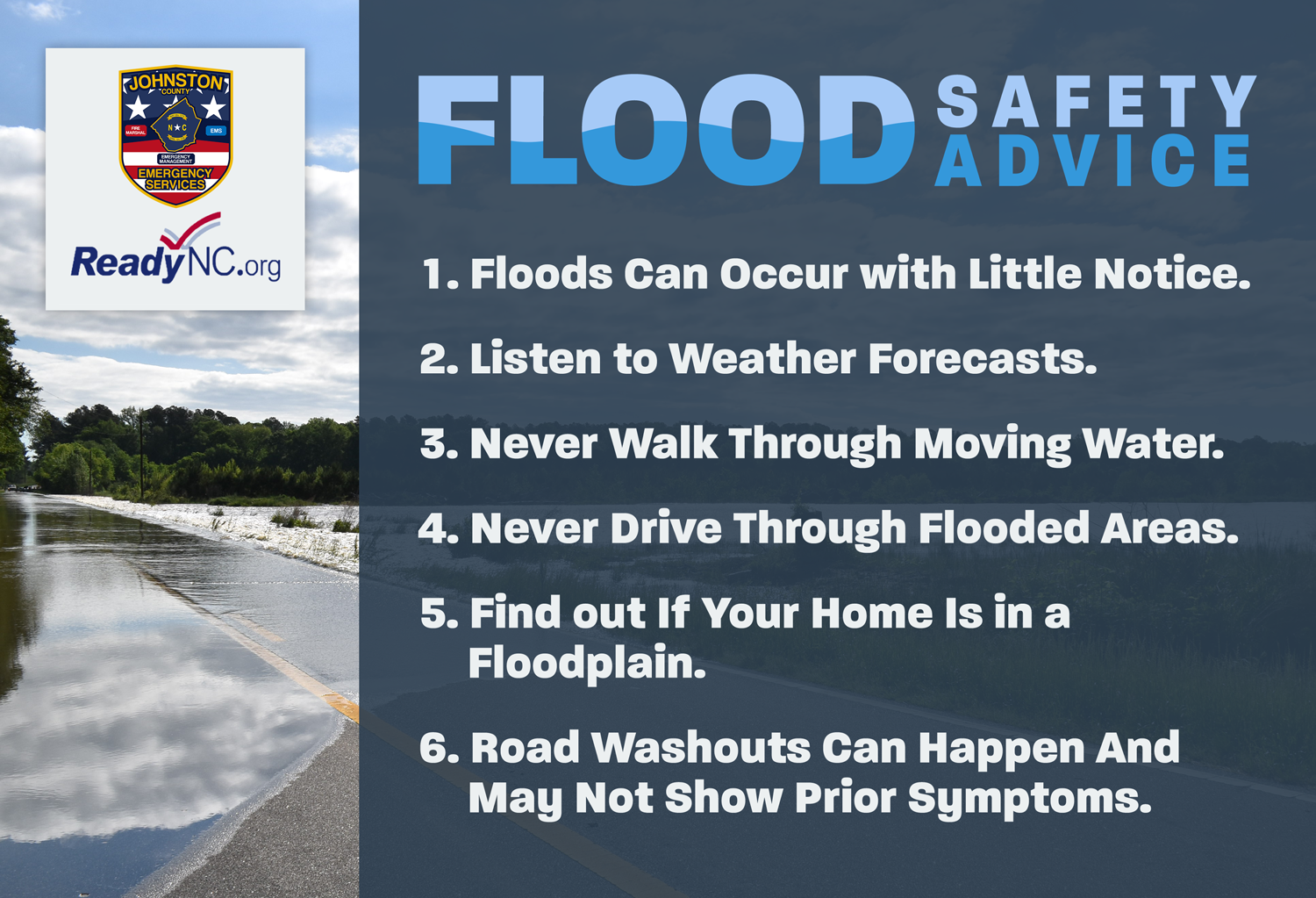Flash Flood Emergency: What To Know And How To Stay Safe

Table of Contents
Understanding Flash Flood Risks & Warning Signs
Identifying High-Risk Areas
Geographic location plays a significant role in determining flash flood risk. Certain areas are inherently more susceptible to these devastating events. Conducting a flash flood risk assessment for your area is a crucial first step.
- Mountainous Regions: Steep slopes accelerate water runoff, increasing the speed and volume of floodwaters.
- Areas with Poor Drainage: Impervious surfaces like concrete and asphalt prevent water absorption, leading to rapid surface runoff.
- Near Rivers and Streams: These waterways are naturally prone to overflowing during periods of heavy rainfall.
- Dry washes and canyons: These seemingly innocuous areas can become raging torrents in minutes.
Factors contributing to flash flood risk include:
- Heavy rainfall: Intense, short-duration rainfall overwhelms drainage systems.
- Rapid snowmelt: A sudden melt of accumulated snow can quickly raise water levels in rivers and streams.
- Dam failures: Dam breaches can unleash catastrophic flash floods downstream.
Understanding these factors allows for a more accurate flash flood risk assessment and proactive planning within high-risk zones and flood-prone areas.
Recognizing Flash Flood Warning Signs
Recognizing the warning signs of an impending flash flood is paramount. Staying vigilant and knowing what to look for can give you precious time to react.
- Rapidly rising water levels: A sudden and significant increase in water levels in rivers, streams, or normally dry areas.
- Strong currents: Fast-moving water indicates a potential flash flood.
- Unusual water sounds: Rushing water sounds from a normally quiet stream or river are a key indicator.
- Heavy rainfall: Prolonged or intense rainfall is a major precursor to flash floods.
- Overflowing rivers/streams: Water exceeding the banks of rivers or streams is a clear sign of danger.
- Official warnings: Heed all flash flood alerts and warnings issued by weather services and local authorities. These alerts and severe weather alerts are your primary source of reliable information.
Preparing for a Flash Flood Emergency
Creating a Family Emergency Plan
A well-defined flash flood emergency plan is crucial for protecting your family. This plan should outline clear procedures and responsibilities for everyone.
- Designated safe locations: Identify high-ground locations within your area that are safe from flooding.
- Emergency contacts: Create a list of emergency contacts, including family, friends, and local authorities.
- Supply kit checklist: Ensure you have a readily accessible flash flood survival kit (more on this below).
- Evacuation routes mapping: Plan multiple evacuation routes and clearly mark them on a map. Knowing alternative routes is crucial in case your primary route is blocked.
Assembling a Flash Flood Emergency Kit
Your emergency supply kit should contain essential items to sustain you and your family during and after a flash flood.
- Water: Store at least one gallon of water per person per day for several days.
- Non-perishable food: Include easy-to-prepare, non-perishable food items.
- First-aid kit: A well-stocked first-aid kit is essential for treating minor injuries.
- Flashlight: A flashlight with extra batteries is crucial for navigating in the dark.
- Radio: A battery-powered radio will keep you informed of weather updates and emergency instructions.
- Extra batteries: Keep a supply of extra batteries for your flashlight and radio.
- Medications: Include any essential medications you or your family members require.
- Important documents: Store copies of important documents (insurance, identification) in a waterproof container. Consider digital copies as well.
Responding to a Flash Flood Emergency
Evacuation Procedures
When official warnings are issued, evacuation should be your priority. Knowing when and how to evacuate safely is life-saving.
- Heeding official warnings: Never underestimate the power of a flash flood. Evacuate immediately when instructed by authorities.
- Avoiding flooded areas: Never attempt to drive or walk through flooded areas. The water may be deeper and faster-moving than it appears.
- Seeking higher ground: Move to higher ground immediately, away from flood-prone areas and waterways.
- Using designated evacuation routes: Follow designated evacuation routes to ensure safe and efficient movement.
Actions During a Flash Flood
If evacuation is not possible, take these critical steps to increase your chances of survival:
- Moving to higher ground: If possible, move to the highest level of your building.
- Staying away from floodwaters: Floodwaters can be contaminated and electrically charged.
- Securing property: Take steps to protect your belongings from damage if possible.
- Monitoring weather reports: Keep updated on weather reports to monitor the flood's progress and anticipate changes.
Post-Flash Flood Recovery
Safety Precautions After a Flash Flood
Once the immediate danger has passed, post-flood safety remains a crucial concern.
- Watch for downed power lines: Avoid contact with downed power lines; they may be live and extremely dangerous.
- Avoid contaminated water: Floodwaters often carry harmful bacteria and pollutants; avoid contact.
- Be aware of structural damage: Check for structural damage to your home before re-entering.
- Report damage to authorities: Report any damage to your property and infrastructure to the relevant authorities.
Seeking Help & Assistance
Numerous resources are available to help you recover after a flash flood.
- Contacting emergency services: Contact emergency services for immediate assistance.
- Seeking financial aid: Explore options for financial assistance through government programs and charities.
- Contacting insurance companies: File a claim with your insurance company for flood damage coverage.
- Contacting local authorities: Reach out to local authorities for information on recovery efforts and support services.
Conclusion
Flash floods are a serious threat, but by understanding the risks, preparing effectively, and responding appropriately, you can significantly mitigate the danger. Remember to always heed official warnings, create a comprehensive flash flood emergency plan, and assemble a fully stocked emergency kit. Staying informed about weather conditions and having a clear understanding of your local flash flood risks is paramount for your safety. Don't wait for a flash flood emergency; prepare today and learn how to protect yourself and your family. Take the necessary steps to ensure you and your loved ones are prepared for a flash flood emergency—your life may depend on it.

Featured Posts
-
 Sunday Memorial Remembering Hells Angels Craig Mc Ilquham
May 25, 2025
Sunday Memorial Remembering Hells Angels Craig Mc Ilquham
May 25, 2025 -
 The Canada Post Strike Threat Protecting Customer Relationships
May 25, 2025
The Canada Post Strike Threat Protecting Customer Relationships
May 25, 2025 -
 French Lawmakers Push For Dreyfus Promotion A Century After The Scandal
May 25, 2025
French Lawmakers Push For Dreyfus Promotion A Century After The Scandal
May 25, 2025 -
 Chinese Tennis Triumph Quarterfinal Spot At Italian Open
May 25, 2025
Chinese Tennis Triumph Quarterfinal Spot At Italian Open
May 25, 2025 -
 Amsterdam Aex Index Suffers Sharpest Decline In Over A Year
May 25, 2025
Amsterdam Aex Index Suffers Sharpest Decline In Over A Year
May 25, 2025
